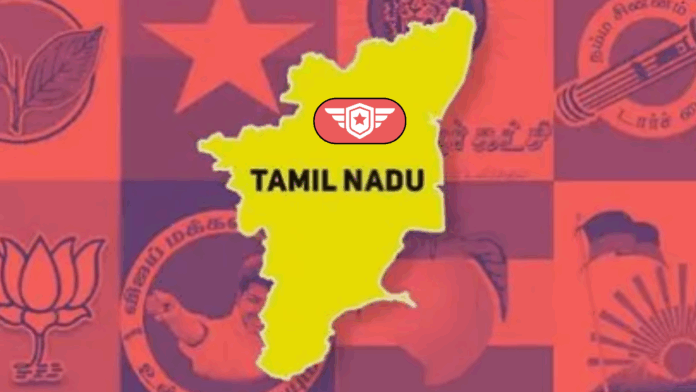🏛 Role of Media in Tamil Nadu Politics
How Journalism Influences Power, Public Opinion, and Accountability in a Politically Vibrant State
Tamil Nadu is known for its rich political history, vibrant public discourse, and deeply engaged electorate. In this context, the media plays a pivotal role—not just in reporting events but in shaping public narratives, influencing electoral outcomes, and holding political power to account. From mainstream newspapers and television channels to digital platforms and YouTube journalism, the media in Tamil Nadu is a powerful political force.
🗳️ Historical Bond Between Media and Politics
Tamil Nadu’s politics has always had a strong connection with mass communication. Starting from the Dravidian movement, leaders like Periyar, C.N. Annadurai, and M. Karunanidhi effectively used print, theatre, and later cinema to spread ideological messages. Newspapers like Viduthalai and Murasoli were not just news outlets but vehicles of social reform and political education.
Later, with the rise of cinema-politicians like M.G. Ramachandran (MGR) and Jayalalithaa, visual media became central to Tamil politics. Their film careers shaped their mass appeal, and television channels like Jaya TV and Sun TV emerged as mouthpieces for political parties, blurring the lines between journalism and propaganda.
📺 Modern Media: Information or Influence?
Today, Tamil Nadu has a wide range of media outlets:
- Leading Tamil news channels like Thanthi TV, Puthiya Thalaimurai, News18 Tamil Nadu, and Kalaignar Seithigal
- Popular newspapers like Dinamalar, Dinamani, and The Hindu (Tamil edition)
- A rapidly growing space of YouTube-based political commentary and social media influencers
While these platforms disseminate news, they also actively shape political opinion through:
- Panel debates on policy and election strategies
- Investigative stories on corruption and scams
- Opinion polls and exit polls
- Breaking news and sensationalism, often timed to political interests
⚖️ Objectivity vs. Partisan Bias
One of the biggest challenges in Tamil Nadu’s political media is maintaining objectivity.
Many media outlets are directly or indirectly affiliated with political parties. For instance:
- Sun TV is aligned with the DMK
- Jaya TV has been associated with the AIADMK
- Smaller digital channels often toe lines based on local political, caste, or ideological affiliations
This often results in biased reporting, selective coverage, and silencing of opposition voices, which affects how the public perceives political developments.
However, some platforms like Puthiya Thalaimurai, The Hindu, and emerging independent YouTube journalists try to maintain neutrality and fact-based journalism, though they too face pressures and criticism.
🧭 Media as a Political Compass for the Public
Despite these challenges, the media still serves a crucial role in:
- Educating voters on political issues, promises, and policies
- Debating budget allocations, governance gaps, and development schemes
- Highlighting public grievances such as poor infrastructure, caste violence, or bureaucratic delay
- Facilitating accountability by questioning ministers, MLAs, and bureaucrats on performance
Especially during elections, the media in Tamil Nadu runs:
- Debate shows with party spokespersons
- Election manifesto comparisons
- Ground-level vox pops with citizens
- Fact-checks on leaders’ statements
This empowers the public to make informed choices, even if not all media outlets remain neutral.
👥 Social Media and Digital Journalism: New Political Battleground
Tamil Nadu’s younger generation increasingly consumes politics through YouTube, Instagram Reels, Twitter/X, and WhatsApp. Independent platforms like:
- Sattai Durai Murugan
- RedPix 24×7
- Chanakyaa
- Vikatan Tamil (digital arm of Ananda Vikatan)
have become alternative sources of political commentary—often more engaging and interactive than traditional media. These platforms are:
- Questioning mainstream narratives
- Giving voice to opposition or grassroots groups
- Crowd-sourcing public opinion
- Running issue-based campaigns (e.g., NEET exam, water rights, etc.)
However, digital spaces also face threats of trolling, fake news, and political manipulation, especially through coordinated campaigns by IT wings of parties.
🛡️ Watchdog Role and Pressures
At its best, Tamil Nadu’s media acts as a watchdog, exposing:
- Corruption scandals (e.g., sand mining, liquor licenses, public works)
- Police brutality or caste-based violence
- Policy failures or neglect in welfare schemes
But journalists face numerous pressures and risks, including:
- Defamation suits and legal harassment
- Online abuse, especially of women journalists
- Physical threats in politically sensitive regions
- Lack of institutional legal and financial support









